Header logo
header top contact widget
Dentures/Partial Dentures
What’s Keeping You From The Dentist’s Office?
Posted on Oct 19, 2021 by William J. Claiborne, DDS MS
As an Periodontist in Asheville NC, I’ve treated many patients who, to no surprise, developed periodontal (gum) disease because of NOT going to a dentist on a regular basis.
According to the Centers for Disease Control & Prevention (CDC), nearly 65 percent of adults aged 18 and over had at least one dental visit in the past year (based on 2019).
https://www.cdc.gov/nchs/fastats/dental.htm
Unfortunately, that leaves 35 percent of adults who did not. 
The reason it is recommended to see a dentist for exams and cleanings TWICE A YEAR is because tartar, which is hardened plaque, can cause cavities and gum disease. One plaque hardens into tartar, it can no longer be brushed or flossed away. It must be removed by a dentist or hygienist using special tools.
Tartar is actually a mass of oral bacteria, which has attached itself to the base of (or in-between) teeth. Tartar (also referred to as calculus), is a colony of bacteria that thrive on oral tissues. Bacteria are living organisms and reproduce rapidly. And, the more there are, the more rapidly they amass.
So, what are the common excuses for avoiding regular dental care? See if you’ve been guilty of one or more:
COST – Some individuals feel dental cleanings and exams are expensive. Actually, there is a great deal of time and training that goes into your individualized care. In addition to the measures of sterilization and instruments, hygienists and dentists are highly-trained, educated, and must stay board certified. As for the investment, these visits are what help you avoid the need for a filling, gum disease, potential damage to teeth due to bite misalignment, and even catch oral cancer at early stages. If dental insurance is not possible, ask if payment plans are available. Many dental offices offer these, most of which are interest-free with no down payment required.
DENTAL FEAR – If fear or anxiety keeps you away from a dental chair, you are not alone. It is estimated that over 70 percent of American adults have some level of this. Sometimes the fear exists because of a traumatic experience in the past or feeling helpless in the chair. Some people react to certain smells and sounds. A few have no idea what prompted their fear, but know it is beyond their control. For these, we advise seeking dental care in a modernized office. Today’s advanced technology has greatly enhanced the level of comfort during care as well as reduced treatment time. Too, offices such as our Asheville periodontal dental office offer oral sedation as well as IV sedation (twilight sleep). These are administered by highly-skilled professionals who oversee the patient using advanced safety monitoring equipment. Ask for a consultation and tour before choosing the office that is reassuring to your unique needs.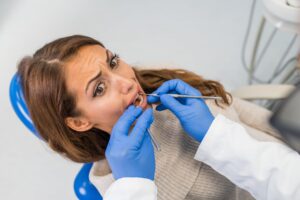
DREAD OF BEING LECTURED – If it’s been years since you’ve seen a dentist, you may be expecting a lecture from the dentist or hygienist (or both!). My staff and I believe that is a sure way to deter someone from cultivating a positive attitude towards their dental relationship. We all want to feel respected and having a caregiver talk “down” to you is unfair, especially because no one knows the story behind your delay or avoidance. If you feel that’s going to be a problem, say so. Be upfront with “a lecture is not going to help me.” If you feel it’s a recurring problem, ask to have your records transferred to an office where you are treated more appropriately.
FEAR OF EMBARRASSMENT – Some adults feel awkward having their denture or partial removed at the dentist’s office. Some people fear they’ll gag during care, which can trigger coughing and even throwing up. Some feel their mouths are so “bombed out” that it’s embarrassing to have a dentist see how much damage has occurred. To reassure you, there is nothing we haven’t seen or experienced. Dentists have quite a lot thrown at us during dental school. As a specialist in periodontics, my additional training covered even more in-depth and complex damage or disease. DO NOT worry about your caregivers. They WANT you to rely on them to help you. Almost any dentist or specialist will tell you that our greatest joy comes from taking a patient from a “hopeless” mouth to a patient who has a healthy, confident smile!
TIME IN TREATMENT – Today’s advanced technology has greatly condensed the time needed to accurately diagnose and treatment plan almost any dental problem. Many treatments can be completed in just one or two visits. For those who have more extensive needs, dentists can sometimes combine several appointments into one long one. This is made much easier for the patient with the addition of oral sedation. Oral sedation creates a totally relaxed state so the patient can “doze” in and out of treatment. It has a quick recovery and sedated patients are carefully monitored for safety and comfort throughout treatment.
Regardless of WHY you’ve avoided the dentist, your smile is worth it! Having an appealing smile you feel joyful in sharing adds to your mood, enhances appearance and makes a positive impression to others.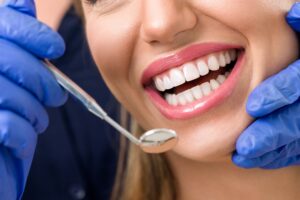
If you’ve avoided dental care for years (or even decades), you may have signs or symptoms of periodontal disease. These include tender gums that may bleed when brushing, gums that recede from the base of some teeth, gums that turn red in color, and frequent bad breath. Gums are the foundation for teeth, so without healthy gums, your teeth will not be healthy, either.
Too, gum disease will only worsen without treatment. If you are a reader of my articles, you may have read the findings of research that correlates the bacteria of gum disease with serious health conditions. These include stroke, heart disease, preterm babies, some cancers, arthritis, diabetes, and erectile dysfunction.
Let us help you feel the positive aspects of achieving a healthy smile. Begin with a consultation by calling 828-274-9440.
Postponing Dental Care Can Be Expensive
Posted on Sep 29, 2021 by William J. Claiborne, DDS MS
Most of us have seen the movie, “Gone With The Wind,” It’s pretty hard to forget the last line of Scarlet O’Hara: “I’ll think about that tomorrow.”
Procrastination is something we all do, some more than others. We all tend to “back burner” things we don’t want to do. As a periodontal dental specialist, I’m guilty of this on occasion.
However, I see a number of patients who have developed periodontal (gum) disease because they delayed or postponed dental care; care that would have easily helped them avoid the problems associated with it.
The reason 6-month dental check-ups are so beneficial is in their ability to give patients a twice-a-year clean slate in oral wellness. During this time, the dentist and hygienist can examine the mouth for signs of abnormal wear, bite alignment, and point out areas that need extra attention in oral hygiene routines at home. (This is especially true for people who have crowded or crooked teeth, as bacteria can easily accumulate in these tight angles.)
This dental appointment also allows the hygienist to remove plaque or tartar that has formed since the patient’s last check-up. Both are accumulations of oral bacteria, which will continue to reproduce rapidly without regular removal.
Plaque starts the process. It is the sticky film you probably feel on teeth when you first wake up. This film is actually a layer of bacteria that has rapidly reproduced during the night. (If you snore or breathe through your mouth during sleep, oral dryness can accelerate the rate of reproduction even more.)
Although it is more obvious on teeth, the film of plaque also coats the gum tissues and tongue. If not thoroughly removed within 48 hours, these bacteria amass to such a level that the plaque hardens. This is known as tartar.
Tartar typically forms between teeth and at the base of teeth. This is why daily flossing is helpful. It scrapes off plaque in areas the toothbrush may not reach, or may not be cleaning sufficiently.
Once tartar forms, however, it can no longer be removed by brushing and flossing. This is what the hygienist is picking at and scraping off teeth during dental cleanings. If not removed, these bacterial colonies continue to grow. And bacteria breed at an amazingly fast pace.
Just how quickly can these oral bacteria amass?
According to information shared by RDH Magazine: (https://www.rdhmag.com/infection-control/water-safety/article/16404976/oral-bacteria-how-many-how-fast)
“some species of oral bacteria can double their numbers every 20 minutes under ideal conditions in a Petri dish.”
This means that one million bacteria can grow to 14 million within an hour. Accumulated bacteria can even be seen in the mouth as a white coating on the tongue. The back of the tongue is typically whiter in color since tooth brushing doesn’t reach there and dislodge embedded bacteria. (This is why it’s important to brush your tongue every day when toothbrushing, or use a tongue scraper.)
Tartar holds such a high number of bacteria that these organisms can cause damage to teeth. They bore into tooth enamel and eat away at oral tissues.
Bacteria are ramped up by foods we eat. They especially love lingering food particles caught between teeth and foods containing sugar. (This is yet another reason to floss daily.)
Initially, gum disease causes tender gums that may be swollen. They may bleed when brushing, which is typically noticed when spitting. Symptoms may also include frequent bad breath, gums that are more red in color than a healthy pink, and soreness when brushing or flossing.
Keep in mind, this is just the beginning. This stage is known as Gingivitis and is just a prelude of what’s to come. If prompt measures are taken as soon as these symptoms arise, Gingivitis may be overcome without requiring dental treatment. Thorough brushing (twice a day, at least), daily flossing, and keeping the mouth moist with plain water may be effective in overcoming Gingivitis.
If not resolved, Gingivitis can progress to periodontal disease. During this level of gum disease, breath odor is persistently bad. The gums bleed easily when brushing and are more red in color. Gums are sore and tender. As the disease worsens, the gums become spongy and pus pockets may form at the base of teeth.
Eventually, the bone tissues and gums become so damaged by periodontal bacteria that some teeth may loosen. This stage is periodontitis and is an infectious disease that can cause devastation far beyond the mouth.
Periodontal disease is the nation’s number one cause of adult tooth loss.
These potent bacteria can enter the bloodstream, creating inflammatory reactions that can activate or worsen a number of serious health problems. These include heart disease, stroke, high blood pressure, diabetes, arthritis, preterm babies, some cancers, impotency, erectile dysfunction, and Alzheimer’s disease.
That’s a pretty serious list. As research continues to study the far-reaching effects of these infectious bacteria, the list seems to lengthen more.
Have you been putting off dental care? Treating advanced gum disease and replacing teeth are both pretty involved procedures.
In many cases, I’ve found patients avoid or delay dental care due to feeling it is too expensive or having fear associated with dental visits. Yet, the price (in time and money) from not properly caring for oral health is steep in many ways.
The devastation caused by these bacteria can be easily avoided with simple measures at home and 6-month dental visits. An at-home dental care regimen should only require about 5 minutes per day. A dental check-up usually takes about an hour.
If you are very uncomfortable during dental cleanings, tell your hygienist. He or she may be able to provide a pre-treatment rinse or a topical swab for more sensitive areas. (Just know that until your gums get into healthier shape, it is the inflammation caused by oral bacteria that makes them more sensitive.)
The obstacles that typically prevent patients from receiving the care they need are:
Cost: Most dental practices offer payment plans that are interest-free with no down payment required. If you don’t have dental insurance, ask about any discounts they may offer or consider using a credit card.
Dental fear: In our Asheville periodontal dental office, we offer both oral and I.V. sedation (“twilight sleep”), if desired. We understand that many adults have anxiety or fear when it comes to dental treatment. Our entire staff is committed to providing all patients with a gentle touch, a respectful environment, and compassionate care.
Embarrassment or feeling a smile is “hopeless”: We see many adults who have “bombed out” mouths. This can happen for a number of reasons. Here, we are a “judgement-free” perio office and treat every patient as we would want our loved ones treated. And, no smile is hopeless. We have a great many patients who are testaments to that!

For patients who have lost natural teeth, for whatever reason, a periodontist has advanced skills in the diagnosis and placement of dental implants. Once your gums are restored to a healthy state, we can discuss that tooth replacement option, if you like.
As with most things in life, delaying care is a sure recipe to get deeper in the problem. Be committed to your daily oral care routine and keeping regular dental appointments. If you are having symptoms associated with any stage of gum disease, however, I am a dental specialist in treating even advanced levels.
Call 828-274-9440. A referral is not needed.
Dental Implants Not ‘One Size Fits All’
Posted on Sep 21, 2021 by William J. Claiborne, DDS MS
A periodontist specializes in the diagnosis and placement of dental implants, in addition to the treatment of all stages of periodontal disease.
For people who are considering dental implants to replace teeth, this level of expertise provides greater reassurance of successful treatment outcomes. A periodontist can also offer patients with a wider choice of implant systems.
How can patients have more dental implant options through a periodontist?
When general dental offices offer dental implants, some general dentists offer implant selection and placement along with the restoration of the implant. (“Restoration” refers to the replacement crown that is attached to the implanted portion.)
Although generalists complete training in dental implants, most courses are offered by particular implant manufacturers. This means that the course focuses on the systems available through this one maker, which may or may not include the one most appropriate for your individual needs.
This is why most generalists refer the placement portion to a periodontal specialist. For their patient, this can mean a higher level of success, especially for complex needs.
For example, a patient who is missing a lot of bone mass (due to missing natural teeth for many years) benefits from the specialized skills of our Asheville periodontal office. A periodontist can incorporate bone rebuilding procedures into treatment to a proper depth. This specialist can help to restore bone that has occurred in the mandible (lower jaw) or maxilla (upper jaw), which may also require a sinus lift.
Another example is a patient who has lost teeth due to periodontal (gum) disease. Because a periodontist combines advanced skills in treating gum disease as well as in dental implants, these patients have an added advantage when it comes to treatment success.
For many reasons, dental implants have become the preferred tooth replacement option. There are over 40 different implant systems, each designed to accommodate various challenges and preferences. Some of the more common types include:
Traditional Dental Implants: In this process, dental implant treatments is done in a couple of stages. In the first stage, placement of each implant is performed. This involves small incisions in pre-selected placement points. In our Asheville periodontal dental office, these points are determined through computerized imaging, taking the guesswork out of the depth and angle of each implant placed. Once the implant is in proper position, the gum tissue is closed over the implant sites.
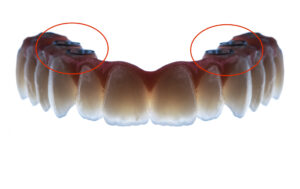
Several implants can often hold a full arch of teeth
The second stage involves a “healing period” of 3 – 6 months. During this phase, the bone grows around the implant(s) to secure each in place. The patient’s denture or partial denture can be comfortably worn during this time. This process is known as osseointegration, which describes the jaw bone growing around the implanted portion. This is what secures the implant so it provides stable, dependable biting and chewing strength.
After osseointegration is complete, the implant sites are uncovered and a post is positioned in the implant’s interior. Onto the posts, replacement teeth are attached. Once the final teeth are secured, patients can enjoy their confident smile along with the biting and chewing comfort like that of natural teeth.
Non-Removable Teeth Attached To Implants: In the past, the more affordable ‘full arch’ systems were typically those designed to support removable teeth. (An ‘arch’ is a full arrangement of all upper or all lower teeth.) However, some people feel removable teeth are too similar to the denture they wish to replace. Although firmly secured, the chore of having to remove teeth to clean them is a task many people want to eliminate.
A number of affordable implant systems are now available, designed to provide non-removable options that are more affordable. For example, the All On 4 dental implant system is made to support non-removable teeth on just 4 implants. With the implanted portions placed at unique angles, these longer implants can fully distribute biting and chewing forces. Another advantage of All On Four is their ability to be placed in minimal bone.
This is good news for people who are long-time denture wearers and were told they have too little bone to support implants. Or, they may have been advised to have bone grafts to rebuild the bone to an adequate height. This adds time and expense to implant treatment. Often, the All On 4 design is able to overcome this obstacle.
‘Same-Day’ Dental Implants: Advancements in dental implant systems and technology have evolved into implant placement and teeth attachment that can be accomplished in a single day. Some implant designs can position implants in the jaw bone in a way that they are able to support replacement teeth immediately.
With the replacement teeth created prior, the teeth may be attached without delay. In some cases, a previously-made denture or partial can be reconfigured to attach to newly placed implants. However, mounting replacement teeth to a just-placed implant isn’t wise for certain situations. This option should be diagnosed and performed by an experienced, skilled and highly-trained dental specialist in order to achieve a successful outcome. While “same-day” procedures can sound appealing, choose care where your individual needs are a priority.
Modern implant dentistry is successful, safe, dependable and can provide nearly immediate benefits. Our office enjoys a reputation for being on the cutting edge of implant dentistry’s techniques, technology and materials. This assures our patients of care that minimizes discomfort and treatment time while optimizing their final results.
Dental implants are designed to last a lifetime, making them an excellent investment. They are the closest thing to the natural teeth you once had, restoring the ability to bite, chew, speak and laugh confidently.
Over the years, I have been a witness to the transformations many implant patients undergo after treatment. They seem to smile and laugh more, become more social, and focus on their oral and overall health to a greater extent.
The type of dental implant best suited for you can be determined after an examination and review of x-rays (we use Cone-Beam digital imaging). Call 828-274-9440 to begin with a private, no obligation consultation to discuss your best options.
Please know that, if cost is a concern, payment plans can help you enjoy your beautifully restored smile while making easy monthly payments. Too, in many cases, an implant is not needed to replace each missing tooth. Often, when several teeth are missing in one area, one or two implants can support a “bridge” of several teeth. This curtails the treatment costs by reducing the number of implants needed.
If dental fear or anxiety is a concern, please mention this during our consultation. In our Asheville office, our entire team strives to provide a respectful, compassionate environment. We offer oral and I.V. sedation (twilight sleep) for nearly any procedure as well as a gentle touch at every visit.
Know The Qualifications of Who Places Your Dental Implants.
Posted on Apr 05, 2021 by William J. Claiborne, DDS MS
When someone has lost a natural tooth, the word that stands out for me is “lost”. A missing tooth means a lot can be lost.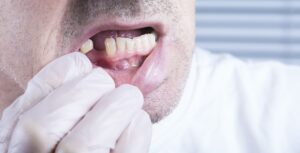
Tooth loss not only leaves a gap in the appearance of a smile, its absence can lead to movement of surrounding teeth.
For example, some people assume that a lost back tooth that is not visible doesn’t need replacing. This is an incorrect assumption. Without all teeth in their proper positions, a gap can cause others to tilt and turn. Additionally, the one above or below will grow longer. These misalignment issues can lead to broken, fractured, or chipped teeth.
Misaligned teeth can also lead to strain on the TMJ, or jaw joints. These joints, located on each side of the head just in front of the ears, are hinges that connect the lower jaw bone to the skull. They are in motion almost constantly.
When the jaw joints experience frequent strain from misaligned teeth, they can cause pain that extends out to head, neck and shoulder muscles. TMJ-related pain can be the source for headaches, migraines, facial pain, ear ringing, dizziness, pain when chewing and difficulty opening the mouth fully.
Obviously, replacing teeth is important. Because of many factors, a dental implant is the superior choice in tooth replacement. A dental implant is a lifetime replacement option. Dental implants restore the ability to bite, chew, speak and laugh confidently without worry. The security of their strength and stability can also be greatly beneficial to one’s self-esteem and self-confidence.
Too, dental implants actually enhance the well-being and lifespan of surrounding teeth. They are an exceptional value when considering their ability to restore the most natural look, feel and function.
In dental implant treatment, the implanted portion is positioned in the jaw bone as a tooth root replacement. This provides attached teeth with the same foundation as natural tooth roots. A partial or bridge simply sits on top of gum tissues and relies on adjacent teeth for support.
Yet, it can be in WHO is involved in your dental implant diagnosis and placement that can provide you with optimal comfort and lifelong success.
When dental offices offer dental implants, many general dentists refer the placement portion to a periodontal specialist. For their patient, this can mean a higher level of comfort and success, especially for complex needs.
However, some dentists offer dental implant placement in their offices. While some have taken extensive courses in implant dentistry, others may have taken a weekend course here and there. These quick courses are typically hosted by an implant manufacturer who trains attendees with a limited selection of implant types. This can limit the patient’s choices when relying on appropriate recommendations for his or her unique needs.
Although there are many factors to go forward with a dental implant, your choice of doctor to place the implanted portion can greatly increase your potential to enjoy your dental implant for a lifetime.
As a periodontist, an aspect of the specialty is the advanced training in the diagnosis and placement of dental implants. This specialized expertise affords patients with a wider variety of choices when it comes to implant systems as well as success in treatment outcome.
For example, consider a patient who is missing a lot of bone mass (often due to missing natural teeth for many years). An implant placed in the upper jaw in too-shallow bone can work its way into the sinus cavity. A lower implant in insufficient bone depth can reach a nerve that runs horizontally through the lower jaw (the mandible).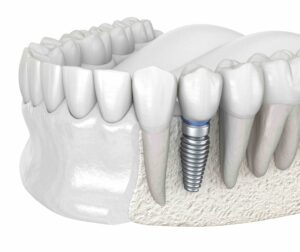
Additionally, the shape, size and the number of teeth to be attached to an implant have much to do with the type of implant system selected. When the placement doctor is only familiar with one or two types, the limitation may pose problems for the patient in the future.
Along with an intricate knowledge of the specific type of implant needed, proper placement angles and depth have much to do with the overall success of the implant. For optimal results, the doctor placing the implant should be skilled in the selection of the implant angles and positioning depths.
In our Asheville periodontal office, we restore the well-being of smiles. We also help patients replace bothersome dentures or partials so they can resume eating the foods they love and laugh confidently in social gatherings.
The doctor is not the sole factor in success, however, Along with proper selection and placement, a patient must take measures to ensure proper oral hygiene at home. Oral bacteria can contribute to an infection that works its way into the bone surrounding the implant. In some cases, the only way to resolve the infection is to remove the implant.
The most troubling thing I see in implant dentistry is when a patient opted for a “good deal” with a less-experienced doctor, and having to remove a ‘failed’ implant.
When a patient entrusts their implant treatment to a skilled doctor and adheres to hygiene and healing guidelines, having an implant fail is very unlikely. The success rate of today’s implant dentistry is excellent – over 97 percent.
Today’s implant dentistry is successful, safe, dependable and can provide nearly immediate benefits. As a dental specialist who has stayed on the cutting edge of implant dentistry’s techniques, technology and materials, I am pleased to witness the transformations our patients undergo after treatment.
The type of dental implant best suited for you can be determined after an examination and review of x-rays (we use Cone-Beam digital imaging). Call 828-274-9440 to begin with a private, no obligation consultation to discuss your best options.
Recent Posts
Categories
Archives
- September 2024
- August 2024
- July 2024
- June 2024
- May 2024
- April 2024
- March 2024
- February 2024
- January 2024
- December 2023
- November 2023
- October 2023
- September 2023
- August 2023
- July 2023
- June 2023
- May 2023
- April 2023
- March 2023
- February 2023
- January 2023
- December 2022
- November 2022
- October 2022
- September 2022
- August 2022
- July 2022
- June 2022
- May 2022
- April 2022
- March 2022
- February 2022
- January 2022
- December 2021
- November 2021
- October 2021
- September 2021
- August 2021
- July 2021
- June 2021
- May 2021
- April 2021
- March 2021
- February 2021
- January 2021
- December 2020
- November 2020
- October 2020
- September 2020
- August 2020
- July 2020
- June 2020
- May 2020
- April 2020
- March 2020
- February 2020
- January 2020
- December 2019
- November 2019
- October 2019
- September 2019
- August 2019
- July 2019
- June 2019
- May 2019
- April 2019
- March 2019
- February 2019
- January 2019
- December 2018
- November 2018
- October 2018
- September 2018
- August 2018
- July 2018
- June 2018
- May 2018
- April 2018
- March 2018
- February 2018
- January 2018
- December 2017
- November 2017
- October 2017
- September 2017
- August 2017
- July 2017
- June 2017
- May 2017
- April 2017
- March 2017
- February 2017
- January 2017
- December 2016
- November 2016
- October 2016
- September 2016
- August 2016
- July 2016
- June 2016
- May 2016
- April 2016
- March 2016
- February 2016
- January 2016
- December 2015
- November 2015
- October 2015
- September 2015
- August 2015
- July 2015
- June 2015
- May 2015
- April 2015
- March 2015
- February 2015
- January 2015
- December 2014
- November 2014
- October 2014
- September 2014
- August 2014
- July 2014
- June 2014
- May 2014
- April 2014
- March 2014
- February 2014
- January 2014
- December 2013
- November 2013
- October 2013
- September 2013
- August 2013
- July 2013
- June 2013
- May 2013
- April 2013
- March 2013
- February 2013
- January 2013
- December 2012
- November 2012
- October 2012
- September 2012
- August 2012
- July 2012
- June 2012


